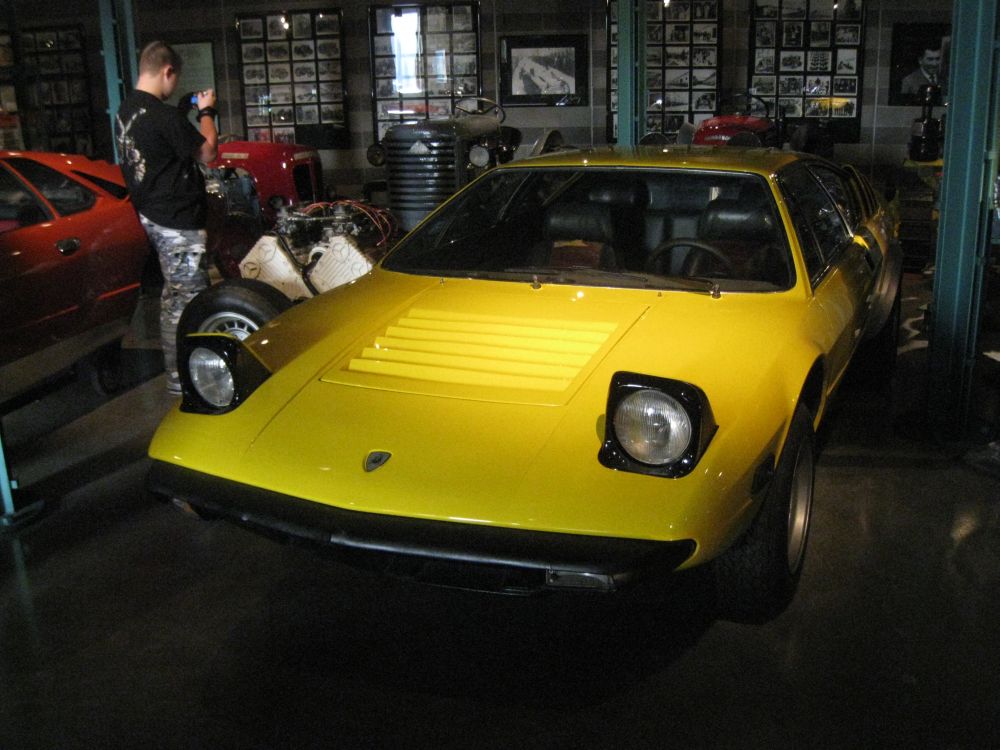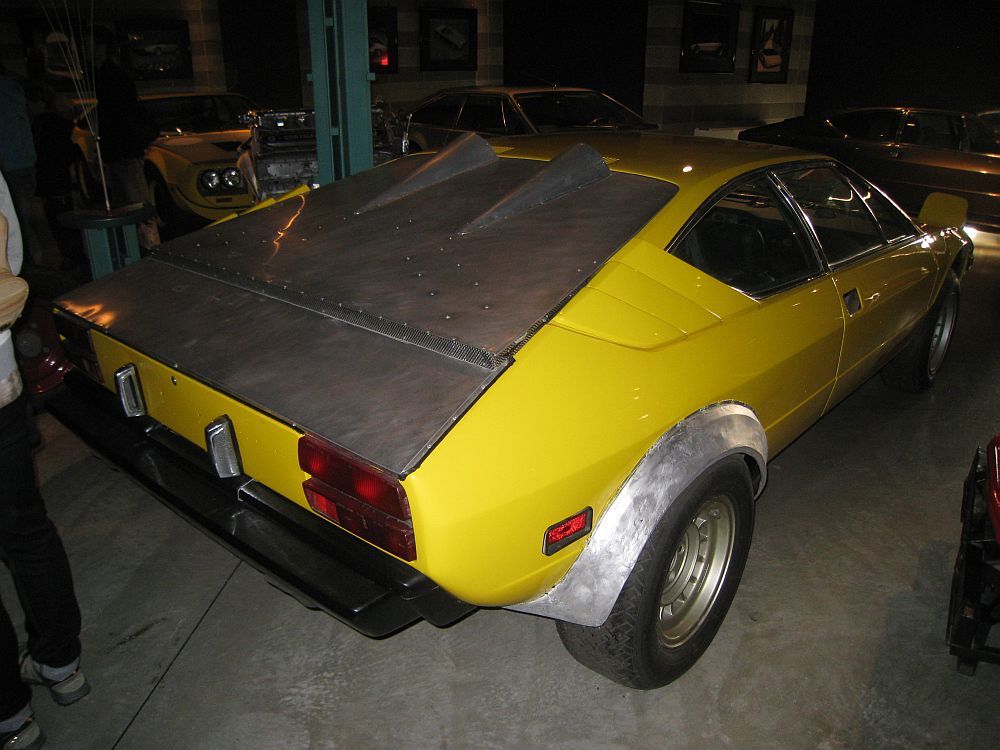Description
The Lamborghini Urraco Prototipo Giallo was the striking yellow show car unveiled at the 1970 Turin Motor Show, the first public appearance of what would become Lamborghini’s compact mid-engined V8 grand tourer. Finished in a vivid metallic yellow that accentuated its taut Bertone-penned lines, this one-off prototype embodied Ferruccio Lamborghini’s vision of a more attainable performance car—something lighter, smaller, and more accessible than the company’s V12 flagships but still unmistakably a Lamborghini in style, engineering, and emotion.
The late 1960s had been a time of bold experimentation for Lamborghini. After the success of the Miura and the Espada, Ferruccio Lamborghini recognized that the company needed a car to compete in a lower price segment, one that could rival Ferrari’s Dino 246 GT and Porsche’s 911 while expanding Lamborghini’s customer base. Engineering responsibility fell to Paolo Stanzani, one of the architects of the Miura, while design was entrusted once again to Marcello Gandini at Carrozzeria Bertone. The result was a beautifully proportioned prototype that would redefine Lamborghini’s design language for the decade to come.
The Urraco Prototipo Giallo was built on an entirely new monocoque steel platform. Its compact dimensions and mid-engine layout allowed Gandini to sculpt a body of remarkable balance and tension. The wedge-shaped profile—a design theme he would later develop further in the Countach—was both futuristic and elegant. The long, flat bonnet led to a steeply raked windscreen, and the roofline flowed seamlessly into the fastback tail. Wide side air intakes fed the engine bay, while the rear featured a series of horizontal louvres and a minimal bumper treatment that emphasized width and stance. The car sat low to the ground, with deep-set headlamps and fine detailing that reflected Bertone’s mastery of proportion.
Beneath the engine cover lay a newly developed 2.5-litre all-aluminium V8 engine, designed in-house at Sant’Agata Bolognese. Displacing 2,463 cc and featuring a 90-degree layout with single overhead camshafts per bank, it produced approximately 220 horsepower at 7,500 rpm. Power was sent to the rear wheels through a five-speed manual gearbox. Though smaller and lighter than the company’s famous V12, the engine delivered a crisp, free-revving character that perfectly suited the car’s nimble handling. Combined with a projected top speed of around 240 km/h, the Urraco promised genuine Lamborghini performance in a more compact, efficient package.
The chassis employed fully independent suspension with MacPherson struts front and rear—an innovation for Lamborghini at the time—along with ventilated disc brakes on all four wheels. The setup gave the car both agility and comfort, with balanced weight distribution that made it easy to handle at speed. The prototype’s steering and suspension geometry were refined by Bob Wallace, Lamborghini’s test driver and development genius, whose input ensured that the Urraco would retain the brand’s characteristic precision and stability.
Inside, the Urraco Prototipo Giallo reflected Gandini’s flair for futuristic simplicity. The cabin featured a low-set dashboard with deeply hooded instruments and a wide centre console flanked by toggle switches and sliding controls. Two sculpted bucket seats were trimmed in tan leather, and behind them sat a pair of small rear seats that made the car a true 2+2. Visibility was excellent, and the interior combined minimalism with sophistication—practical enough for daily use yet entirely in keeping with Lamborghini’s avant-garde ethos.
The Urraco’s debut at the 1970 Turin Motor Show created a sensation. The metallic yellow paint, chosen to emphasize the body’s sculptural surfaces, gleamed under the exhibition lights, drawing crowds throughout the event. Journalists and visitors praised its balance of design, innovation, and everyday usability. The car’s name—derived from a breed of fighting bull—fit perfectly within Lamborghini’s tradition and reflected the car’s character: smaller and more agile than its stablemates, yet full of spirit and strength.
Following the show, the prototype underwent testing and refinement before production of the Urraco P250 began in 1972. While the production car retained most of the prototype’s design elements, it gained a slightly higher roofline, revised bumpers, and details adapted for series manufacture. The spirit of the Giallo prototype, however, remained intact—a perfect blend of artistry and engineering that captured Lamborghini’s ambition to broaden its reach without diluting its identity.
Today, the Lamborghini Urraco Prototipo Giallo is recognized as one of the most important one-offs in the company’s history. It marked a turning point in Lamborghini’s evolution, bridging the sensuous curves of the Miura with the angular modernism that would define the Countach and the later V8 models. The car survives as a beautifully preserved piece of automotive history, admired for both its beauty and its significance.
The Urraco Prototipo Giallo stands as a symbol of Lamborghini’s confidence at the dawn of the 1970s—a car that combined elegance, innovation, and performance in a compact, brilliant package. It was the beginning of a new chapter for the brand, proof that Lamborghini could innovate not only in power and speed but in accessibility and design, creating a true driver’s car that looked every bit as daring as it felt to drive.


